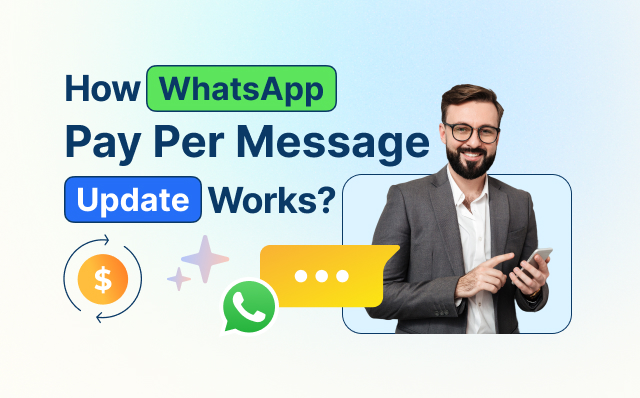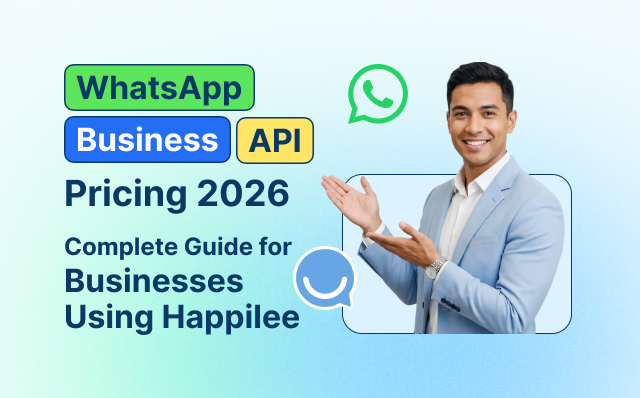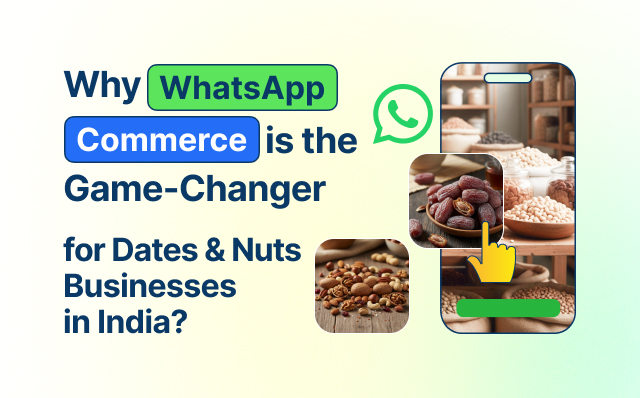WhatsApp has become the go-to communication channel for businesses worldwide. With its massive user base and instant messaging features, companies are using WhatsApp to connect with customers more efficiently. Recently, the platform introduced a new WhatsApp Pay Per Message update that changes how businesses are charged for conversations.
This shift is part of the New WhatsApp API Pricing model, designed to create more transparency and help businesses align costs with actual engagement.
Understanding WhatsApp Business API
The WhatsApp Business API is designed for medium and large companies to manage customer communications at scale. Unlike the free WhatsApp Business app, the API enables automation, integration with CRMs, and mass messaging capabilities.
This makes it possible for businesses to send order updates, customer support messages, marketing campaigns, and even authentication codes securely.
What Is the WhatsApp Pay-Per-Message Update?
Earlier, WhatsApp charged businesses based on 24-hour conversation windows. Once a user responded, businesses could chat with them for free within that time.
But with the WhatsApp Pay Per Message update, things have shifted. Instead of a flat conversation charge, businesses now pay per message sent, depending on the type of conversation and region. This adjustment is central to the New WhatsApp API Pricing strategy rolled out globally.
Categories of Conversations
Meta has structured WhatsApp pricing into four main categories:
- Marketing – Promotional offers, campaigns, product launches
- Utility – Transactional messages like invoices, receipts, or delivery updates
- Authentication – OTPs and verification codes
- Service – Customer support and issue resolution
Each category has its own pricing rules, making cost management more transparent.
How Pricing Works in Pay Per Message?
Under this update, businesses are billed for every message template they send. The cost varies by:
- Region – Different rates in Asia, Europe, North America, etc.
- Message Type – Marketing messages are more expensive than utility ones.
This new structure is a direct result of the New WhatsApp API Pricing, ensuring businesses only pay for meaningful communication rather than unused conversation windows.
Business Impact of the WhatsApp Pay-Per-Message Update
For small and medium enterprises, this model brings both opportunities and challenges.
- Pros: Clear pricing helps businesses budget better.
- Cons: Frequent communication may get expensive if not managed wisely.
Small businesses need to adopt automation tools to keep messaging relevant and cost-efficient.
Impact on Large Enterprises
For bigger companies with thousands of daily messages, the WhatsApp Pay Per Message model allows better control over spending. Instead of paying for unused conversation windows, they only pay for messages that are actually sent.
This makes forecasting and budget planning much easier.
Benefits of WhatsApp Pay Per Message
- Transparency: Businesses know exactly what they’re paying for.
- Efficiency: Encourages relevant, high-quality messaging.
- Scalability: Works well for both small and large companies.
Challenges of the Update
While transparent, the update also poses challenges:
- Higher costs for frequent promotional campaigns
- Risk of over-spending without automation
- Need for constant tracking of message categories
How to Save Costs with the WhatsApp Pay-Per-Message Update
Businesses can reduce costs by:
- Using AI-powered chatbots for FAQs and basic support
- Prioritizing high-value conversations like order updates and customer support
- Scheduling marketing campaigns strategically
This ensures businesses get the most out of every message sent.
Role of AI in WhatsApp Messaging
Artificial Intelligence plays a huge role in managing costs effectively. AI-driven chatbots can handle common queries, direct customers to human agents when needed, and keep conversations short and precise.
This way, businesses reduce the number of unnecessary paid messages while improving customer experience.
Best Practices for Businesses
- Personalize messages – Generic texts are often ignored
- Time your campaigns – Avoid spamming during odd hours
- Segment your audience – Send targeted messages for better engagement
Comparison with Other Messaging Platforms
Compared to SMS, WhatsApp offers richer media and better engagement rates. Unlike email, WhatsApp ensures higher open rates and instant delivery.
This makes it worth the investment, despite higher costs.
Future of WhatsApp Business Communication
Looking ahead, we can expect Meta to refine its pricing model further, possibly introducing subscription packages or AI-driven features. Integration with CRM systems and marketing automation tools will also play a huge role in optimizing communication.
For more details, you can also check Meta’s official documentation on WhatsApp Business API pricing.
Conclusion
The WhatsApp Pay Per Message update represents a major shift in how businesses communicate with customers. While it introduces new costs, it also provides greater transparency and efficiency. By adopting AI, automation, and smart strategies, businesses can maximize their ROI while keeping customers engaged.
Frequently Asked Questions (FAQs)
1. What is WhatsApp Pay Per Message?
It’s the new pricing model where businesses are charged per message instead of per conversation window.
2. How can businesses save costs?
By using automation, AI chatbots, and focusing on high-value conversations.
3. Is this update good for small businesses?
Yes, if managed wisely. It brings transparency but requires cost optimization.
4. Does the update affect global users?
Yes, but pricing varies by region.
5. What’s next for WhatsApp API pricing?
Meta may introduce new subscription options and AI-powered features.


